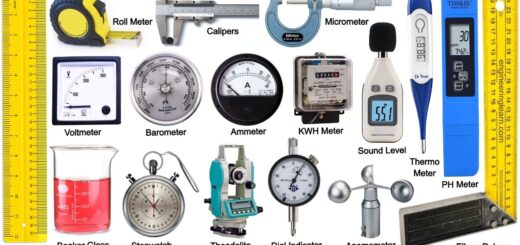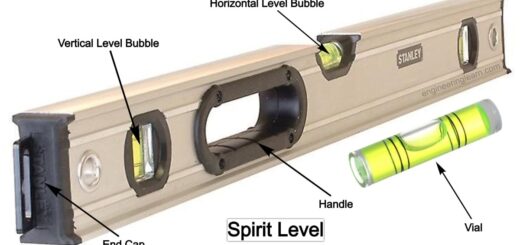Mallet (Tool) – Types, Uses, Functions & Mallet vs Hammer [Complete Details]
![Mallet (Tool) - Types, Uses, Functions & Mallet vs Hammer [Complete Details]](https://engineeringlearn.com/wp-content/uploads/2022/06/Mallet-1024x539.jpg)
Introduction
Mallet (Tool) – Introduction, Types, Uses, Functions & Mallet vs Hammer [Complete Details]: – Mallet is a device that can be used to accomplish various tasks. It’s versatile and could be utilized for anything from crushing nails to shaping metal. Mallet can also be the title of a company which makes high-quality tools.
Their history goes to the beginning of time when they were first utilized as weapons. Later, they were used more for their practical value and became an instrument for various tradespeople, for example, blacksmiths, carpenters and stonemasons. Mallets remain essential to numerous trades, including metalworking and woodworking.
What is Mallet?
Mallet is a tool which serves a multitude of functions. It is employed to smash nails or break objects. The word Mallet can also be used in music. A mallet can strike the drum or the cymbal in the percussion genre. Mallets hit the keys in keyboard instruments such as the piano.
The word “mallet” comes from “the Old French word “maleate”, which translates to “hammer. The original user that the word had was “a tool to strike”. But over time, the word’s definition has been altered slightly and could now be used to refer to any mallet-like instrument.
Mallets come in many sizes and shapes. They are made of metal, wood, or even made of plastic. The Mallet’s weight and size depend on what it is employed for. For instance, the Mallet made of wood is enough to hit the xylophone keys, whereas an iron one might be required to hit the gong.
Types of Mallet
There are two kinds of mallets: ones with handles and those that do not have. The type of Mallet you require will depend on the job at hand. For instance, if you need the ability to drive nail holes into the wood, you’ll require a handle to ensure you can exert more force. If you’re shaping metal, you won’t need a handle since the head’s weight is enough to suffice to provide the power.
Whatever project you’re undertaking, there are mallets available to aid you in completing the job promptly. With its long tradition and numerous applications, the Mallet is an instrument that has endured the test of time. Here are the different kinds of Mallet:
1. Wooden Mallet
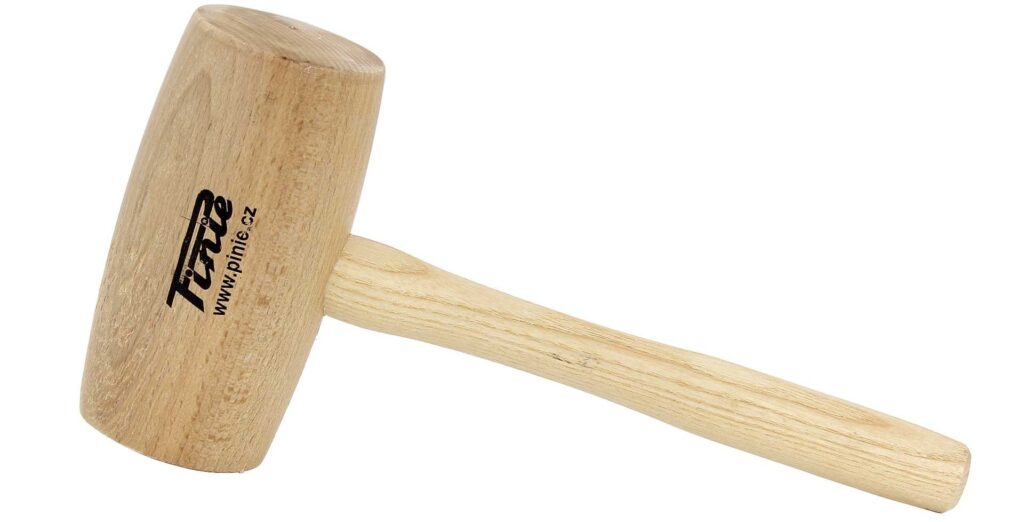
Mallets made of wood are the most commonly used kind of Mallet. They can be used for many different tasks, such as pounding nails or making metal. Wooden mallets are generally made of hardwoods like oak or maple.
2. Metal Mallet

Metal mallets tend to be more frequent than wooden mallets, yet they have advantages. Metal mallets are typically constructed from brass or steel. They are heavier than wooden mallets giving them greater strength. However, this makes them harder to manage.
3. Plastic Mallet
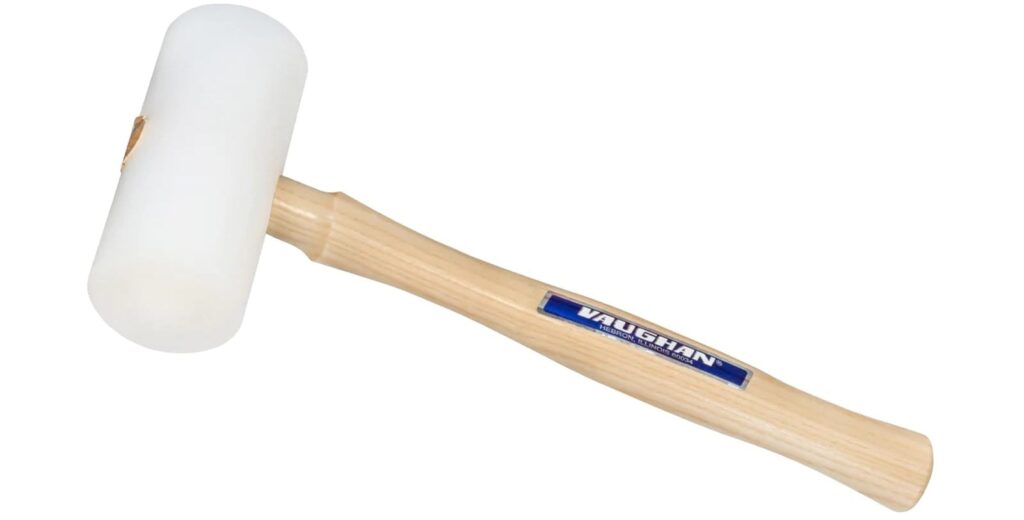
Mallets made of plastic are among the least popular kind of mallets. They are generally made from hard plastics like polycarbonate. Mallets made of plastic are light and easy to manage. But they don’t possess the same strength as wood or metal mallets.
4. Rubber Mallet

Rubber mallets are a kind of mallets made of rubber. They are generally employed when a more gentle blow is required, like when working with fragile materials or making metal. Mallets made of rubber are often used in musical instruments, like percussion and keyboard instruments.
5. Bench Mallet
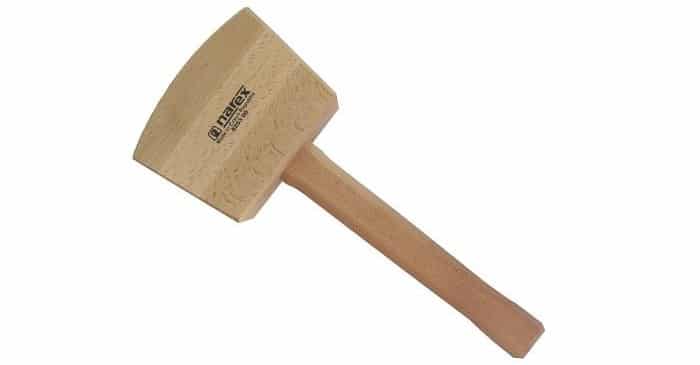
The bench mallet can be described as a mallet used when working on a bench. They are typically smaller than other mallets and come with a shorter handle, allowing them to be operated with only one hand. They are usually made of metal or wood and are typically employed by blacksmiths, carpenters and jewellers.
6. Carvers Mallet

The Carver’s Mallets is a form of Mallet designed for wood carving. They are generally made from woods like oak or maple. Carver’s mallets are usually smaller than other kinds of mallets. They come with a smaller handle, which allows them to be used with just one hand.
Mallets for Carver are employed to hit chisels and other carving tools. The Mallet’s head is generally round and is typically coated with rawhide or leather to shield the device from harm. Mallets for carvers are essential for anyone wanting to create wood carving.
The word “carver’s mallet” is derived from the Old English word “organ”, which translates to “to slice”. Carving is a long-standing art form, and Carver’s mallets have been used since the beginning. They remain essential tools for wood carvers across the world.
Why is Mallet important?
One reason that mallets are helpful is that they are versatile tools. They can be used for anything from crushing nails to shaping metal. They are essential equipment for tradespeople, such as carpenters, blacksmiths and stonemasons.
Another reason that mallets are helpful is that they are available in various sizes and shapes. That means you can locate one suitable for your needs, regardless of the project you’re working on. Whether you want something light and compact or heavy and robust, there’s sure to be a mallet that will fit your needs well.
10 Uses of Mallet
Mallets are tools for hands comprising a heavy head and a handle employed to hit objects like nails or other metal objects to break them or force them onto a different surface. Mallets are frequently used in construction work or carpentry work, as well as blacksmiths.
Various mallets in the marketplace today are designed to serve particular purposes. For example, framing Mallets can be used to drive nails into lumber to build the frame of a house. Sledge mallets, on the other hand, are mallets that weigh more and are made for breaking up bricks or concrete.
Mallets aren’t limited to engineering or construction work but can be helpful in the home. The most common uses for mallets are hanging photos on walls, breaking out the dents on metal surfaces and breaking up lumps of dirt or mud.
Mallets are among the most ancient and valuable tools that exist. Your imagination only limits their uses. Here are ten ways to make use of the Mallet for excellent service:
- Hit dents on metallic surfaces – whether a car fender or stainless-steel sink, a few strikes with a mallet usually remove small bumps or even slight imperfections.
- Dissolving stubborn clumps of dirt or mud you’ve ever had to dig through hard-packed soil and earth, you’ll know how challenging this can get. A few well-placed swings and a large mallet can help break up the most difficult soil clumps.
- Placing pictures on walls and trying to nail nails into wall studs using your bare hands is difficult. Make use of a mallet and effortlessly finish the task.
- Use a mallet to drive nails into wood – If you’re working on carpentry or making decking, nailing them into wood is an essential step. With a mallet, it is easy to put them in wood without severing the grain.
- Unlocking rusted bolts and nuts Over time, the metal parts may be stuck together due to the rust. A few taps using mallets can break the bonds and make it easier to take them off.
- You can quickly tackle small demolition projects – if you have to remove the drywall from a wall or tear down an old cabinet with a mallet, this is the best tool to use. You have to use the appropriate safety equipment!
- Make sure the meat is tender – If you’re cooking steak at home, you’ll need to ensure that it is delicate and well-cooked before cooking. Use the meat mallet (or perhaps a regular mallet) to smash any problematic areas.
- Forming shapes with metal with just a bit of energy and perseverance, you can use mallets to turn metal into many fascinating objects. This is a common technique for blacksmithing and various other craft disciplines.
- Crushing spices and herbs – If you’d like to unlock the full flavour of your cooking herbs, give them a good shake using a mallet before including them in your meal.
- Mallet tables for coffee – For centuries, artisans have employed mallets to design beautiful pieces of furniture using metal and wood. So, make a try now.
What are the functions of Mallet?
Mallet is a tool which can be used to form metal. It is composed of a handle and a head. The head is generally composed of steel, while the handle is constructed of wood or iron. The head is a circular flat surface that can be utilized to mallet metal. The back is the back of the skull known as the poll and is used to pound or chisel. Mallets come in various sizes and are typically classified by length and weight.
The most prominent characteristic of Mallets is the head. The charge is made from steel and has an elongated, flat surface. The surface is used to pound into the iron. The back of the Mallet is known as the poll and is used to attack or chisel. Another characteristic that is present in the Mallet is the handle. The handle is made from metal or wood and helps you hold the Mallet. The third characteristic that is unique to the Mallet is the dimension. Mallets are available in various sizes and are typically classified by length and weight.
A Mallet is a multi-purpose tool which can be utilized to accomplish a range of tasks. The Mallet can do the job if you want to form steel, smash herbs, or even drive nails into wood. Don’t hesitate to grab one and test it out! There are numerous kinds of mallets for sale, each made to serve a particular purpose. For instance, there are sledge mallets that are heavy and powerful tools that are designed to be used for demolition, as well as nail guns, which are used to push nails into drywall or wood as well as ball-peen mallets that are used to cut metal.
Whatever kind of Mallet you’ll need, it is essential to select one that’s easy to use and is well-made. A quality mallet must feel comfortable in your hand and come with a sturdy head that can withstand repeated strikes. It’s an excellent idea to select a mallet with an ergonomic handle to make you less tired while working.
Difference Between Hammer and Mallet
When you think of tools, numerous devices are used for various functions. Mallets and hammers are two tools commonly employed for the same purpose. However, there are distinct features between these two tools. Hammers usually include a claw on one side that can be utilized to pull nails out of wood, whereas mallets don’t have. Mallets tend to be bigger and heavier than hammers giving them greater power to accomplish tasks like nailing nails or breaking objects.
A mallet can be used to serve as a Hammer
A mallet is a tool that can be used as to means for hammering. It is a device used to strike or hit something. Therefore, it can be used as a tool for hammering. If you have to insert a nail into something, like a piece of furniture, it is possible to use mallets to aid you. It is also possible to use a mallet to hammer nails from something. Therefore, if you have both a hammer and Mallet, you could use the Mallet as a mallet.
Why are mallets employed in carpentry?
Mallet is employed in carpentry to serve several reasons. The first is to hit nails and various fasteners in wood. This ensures a secure fitting that will not become loose in time. Mallets are also used to make wooden joints. When two pieces of timber require joining, the Mallet is employed to force them in place. This will ensure a secure bond that will last even under stress. Additionally, mallets can be utilized to create shapes in wood. One can make any shape you want by hitting it with the correct quantity in force.
What kind of wood is used to make mallets?
Numerous kinds of wood can make mallets according to the desired weight, hardness, and Endurance. The most popular woods used in mallets include maple, hickory and oak. Hickory is a solid, dense wood typically employed for heavy-duty applications like frames or sledgehammers. Maple is a lighter wood with a smoother grain, making it ideal for delicate work like striking with chisels or using precision instruments. Oak is another wood used for heavy and light tasking, based on the oak.
